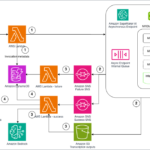
artoleshko
Debt levels are a big worry, with both presidential candidates adding trillions to the national deficit during their first terms in office. It’s a problem because measures like tax increases and spending cuts are not popular with voters who only consider four years at a time, while it can take a while to feel the higher costs related to debt servicing. In fact, the U.S. is set to spend $892B on interest payments in the current fiscal year, more than the figure earmarked for defense spending, and that number is set to top $1T in 2025, which is close to the total budget for Medicare.
Quote: “Fiscal policy is a job for elected people. We’re not elected people, so we don’t comment on it – particularly in advance of a presidential election,” Powell said at an ECB conference in Portugal. “I will say more broadly, though, the United States is running a very large deficit at a time when we’re at full employment. The level of debt that we have is not unsustainable, [but] the path that we’re on is unsustainable – that’s completely not controversial. This is something that should be a top-level issue. You can’t run these kinds of deficits [even] in good economic times for very long. In the longer run, we’re going to have to do something sooner or later, and sooner will be better than later.”
Higher deficits can also make inflation a bigger problem for the central bank – which uses monetary policy to keep prices stable – but has little say over what happens on the fiscal side, where outsized spending has been the norm across both parties. Credit rating agencies are taking notice, with Moody’s cutting its credit outlook on the U.S. in November, citing heavier downside risks to the country’s fiscal strength. Fitch also lowered America’s credit rating following last summer’s debt ceiling drama, while S&P was the first to downgrade U.S. government debt in 2011.
Going global: Government bond yields are used to price many other types of debt and can hurt economic growth if levels continue to stay elevated. Kicking the can down the road during good times has the potential for devastating impacts if a crisis hits, and many other developed nations across the globe (like Japan, France, Canada and the U.K.) are also experiencing troubles managing their debt-to-GDP ratios. “Markets could at some point question fiscal sustainability,” said Claudio Borrio, head of the economic department at the Bank for International Settlements. “We know from experience that things look sustainable until, suddenly, they no longer do.”











